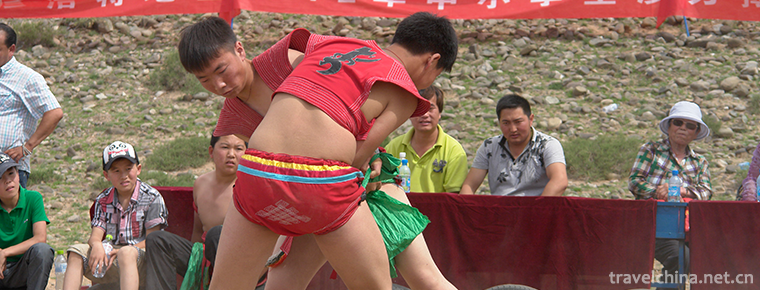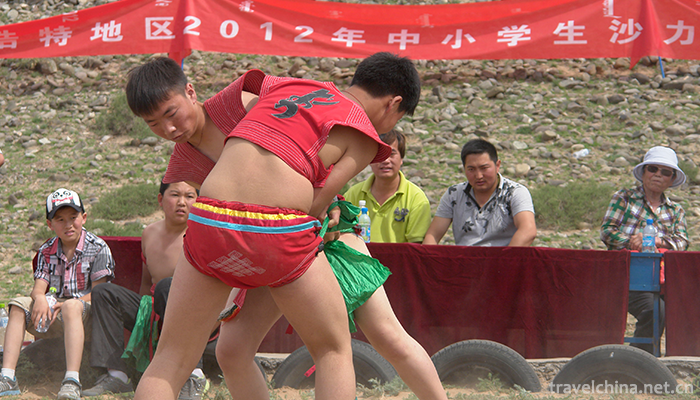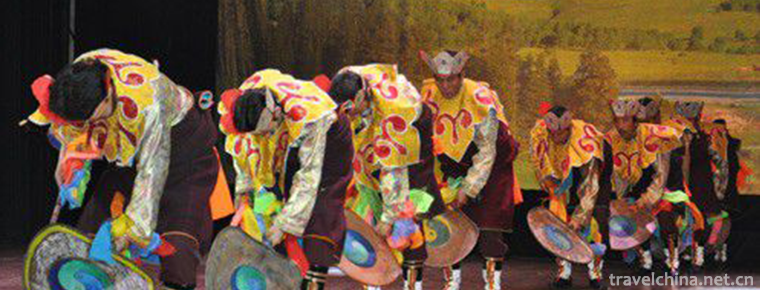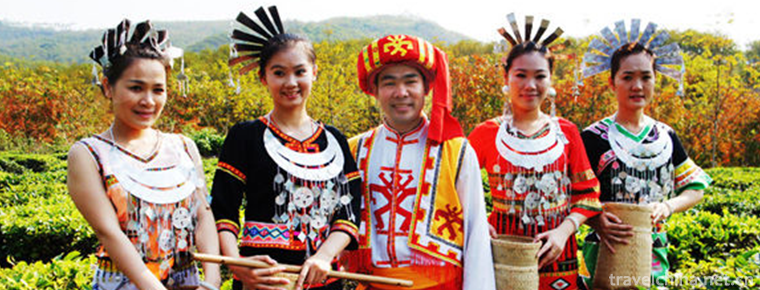2019-04-05

- By ChinaWiki.net
- Chinese Edition
- 2019-06-12
Sharipol wrestling
Shaliboer style wrestling is a national traditional sports event originally created and retained by the Weilat Mongolian people. It is one of the main sports events in the Uznada Mu Grand Event in Alashan. The word "Shaliboer" derives from the Mongolian words "Shalaba" (rapid meaning) and "Shalamagai" (agile), and has evolved into "Shaliboer" after a long period of phonetic translation. The action of cutting shovel, knee folding and grasping collar in Shalibol wrestling is named after the action of camel fighting. Shaliboer-style wrestling alliances, Sumu towns and parts of Mongolian settlements in Xinjiang, Qinghai and Gansu are popular.
On June 7, 2008, Shaliboer wrestling was listed in the second batch of national intangible cultural heritage list with the approval of the State Council.
Brief Introduction to Wrestling
In June 2008, it was selected as the second batch of national intangible cultural heritage list approved by the Ministry of Culture by the State Council.
Declaration: Alashan Left Banner of Inner Mongolia Autonomous Region
In Alashan, western Inner Mongolia, there is also a Mongolian Wrestling - "Shaliboer". You can see the picture of the Mongolian Shaliboer.
Shaliboer wrestling is a traditional national sport originated and retained by Alashan Heshuote Mongolian people, and it is also one of the main sports events in Alashan's ancient "Uzbekistan" Festival and modern Nadam congress.
After a long period of phonetic translation, it has evolved into the word "Sarabauer". The action of cutting shovel, knee folding and grasping collar in Shalibol wrestling is named after the action characteristics of camels fighting against each other. The number of participants in Sharipol wrestling must be a multiplier of 2, regardless of body weight level, and a wrestling will be the winner or loser. In the competition, barefoot wearing triangle shorts head-on from the two corners of the court, grabbing each other's shorts and then starting to attack.
Shaliboer wrestling skills include: forward attack, fierce back, sneak attack, backward push, left pull and right twist, inside and outside foot grabbing, rotating pressure, up pressure, air spin, singles, shoulder loosening, hard resistance, up and down buckle, etc. Athletes need to have strong physique, endurance, wisdom and skills.
The Origin of Wrestling
Shalibol wrestling is a traditional national sport originated and retained by the Mongolian people of Alashan and Shuote. It is also one of the main events in the ancient "Uzbekistan" Festival and the modern Nadam festival in Alashan. The word "Shaliboer" derives from the Mongolian words "Shalaba" (rapid meaning) and "Shalamagai" (agile), and has evolved into "Shaliboer" after a long period of phonetic translation. The action of cutting shovel, knee folding and grasping collar in Shalibol wrestling is named after the action of camel fighting.
Shaliboer wrestling has many skills regardless of body weight. Athletes need to have strong physique, endurance, wisdom and skills. Sharipol wrestling is not restricted by sex, age, venue, time and clothing. The champion who wins the Uzhis event can receive nine prizes such as sheep and the title of "sacred wrestler".
Wrestling Inheritance
Shaliboer wrestling is a popular activity, which has been passed down among the local Mongolian people for more than 300 years. For various reasons, this traditional project has faced the situation of losing its heritage. Since May 2004, Alashan Left Banner has organized manpower to go deep into all parts of the banner and to Qinghai, Xinjiang and other places to excavate and organize this traditional form of sports activities, formulate rules and clothing, train 56 referees and 56 coaches from all parts of the region, and carry out the national "Shaliboer Cup" Boke Competition. At the beginning of this year, the People's Committee of Inner Mongolia Autonomous Region and the Sports Bureau decided to list the Shaliboer wrestling as a competition item of the regional people's games.

Ask a Question
Your email address will not be published.



0 Questions